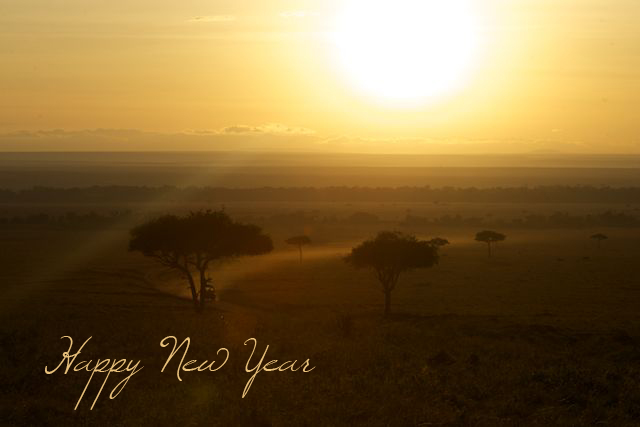photo course
On Photo Safari: Auto ISO
19/01/13 08:39 Filed in: Photo Safari

From the point and shoot cameras to the professional digital cameras, all have the feature “Auto ISO” and although one might have learned during a photography course how to use the manual ISO settings, one often goes just back to use Auto ISO. It’s just convenient.
And it might work in most of the situations, but not as well when being on a photographic safari. Photographing in the bush is different and the auto settings often fail to match the light conditions there. The Auto ISO often goes too high and the images look washed out. Use in normal bush bright daylight ISO 100 and you will be fine. But keep looking at the light and adjust the ISO manually when the light gets lower. You will see the results are much better. Depending on what manual setting you prefer, rather leave the ISO at 100 and play with the aperture.
Happy playing!
Ute Sonnenberg for www.rohoyachui.com
On Photo Safari: The 3D-Tracking Autofocus Challenge
12/01/13 12:56 Filed in: Photo Safari

Wildlife photography is different and the last wildlife photography course in the Northern Kruger Park in South Africa made that clear once again.
Wildlife photography demands a lot of efforts from the photographer. Not only the environment is demanding, also the photographic subjects and the light. Some features of a camera that were included in high end devises do not work in the bush. They are mainly made for other purposes and one needs to be conscious about that.
For example the 3D-tracking autofocus setting, tested during the mentioned photography course in Kruger Park on a Nikon D800E. The focus picks up the wrong things, does not recognize the head/face of an animal and gets confused with the light. The photographer has to chose the focus point, otherwise what he wants in focus is not in focus. So, be careful where you use what autofocus setting and be conscious that the photographer got to do efforts to get it like he/she wants it.
Practice the different settings when you have time to play and not when you want it to work. That will make you happier with the results.
Happy snapping!
Ute Sonnenberg for www.rohoyachui.com
Photography: Aspiration vs. Inspiration?
11/01/13 19:59 Filed in: Photography & Art

What are your resolutions for this year? Do more sports, eat less and healthier and spend more time with family and friends? What are your resolutions for this year regards photography? Do photography courses, travel to photograph more of the world, get a new camera, make more photo books or learn how to photograph at night?
What came first, aspiration or inspiration? Did you cherish the hope of becoming a visual artist and you happened to have a camera at home or were you inspired to capture moments and you developed the hope of winning an award?
Does it matter? As long as you enjoy photographing, you will be inspired to achieve great things in life, in arts and elsewhere. Take your camera and snap what you see, share it and enjoy the captured moments forever.
Be inspired to achieve what you wish to achieve.
Ute Sonnenberg for www.rohoyachui.com
Travel Memories 2008: On Safari in Africa - Day 20 and 21
06/01/13 17:20 Filed in: Travel & Inspiration

Day 20
Our last full day in the bush and we went back to the waterhole from yesterday. When we arrived the waterhole was empty and that means in times of drought that there must be cats around. And yes, when we got close we saw them. Two male lion were lying at the waterhole. We took a closer look and found out that they weren’t well. One of them was limping and he looked very dehydrated, skinny and his belly looked like a balloon. The other one didn’t look injured but very skinny too. Paul told me that they are brothers and we made the conclusion that one got injured and his brother stayed with him and shared the pain and struggle. It was very touching to watch them and very sad too. When the sun came out they tried to get some shade under a skinny tree about 100 meters away. It took them forever to get there and I was afraid they wouldn’t be alive for long anymore.
When we came back to the camp that morning we had visitors for lunch. A breeding herd of elephants was resting about 50 meters away from our tents under the trees. This was awesome. They allowed us to be so close to them and to share the site. It felt magical.
In the afternoon I wanted to go back to look for the two lions. They were still there under the tree and after a while they started moving again towards thicker bush, probably to find some food. It was very impressing how they carried on trying to survive and how the brothers stayed together. And it was also very sad to watch them and to feel their pain.
Day 21 – The Final Day of a Most Amazing Photographic Safari
We had to go back to Nairobi. On one hand we looked forward to sleep in a bed, having a shower and being at home. On the other hand we had become a good team and we would miss each other and the bush. Anyway, we had to go and Paul drove furiously fast to get quickly back. He also wanted to be with his relative in the hospital and Alex and me wanted to relax, it was after all a Sunday afternoon.
Asante sana.
Ute Sonnenberg for www.rohoyachui.com
On Photo Safari: The Challenge of a Black Bird
05/01/13 20:13 Filed in: Photo Safari

We were driving in the Masai Mara when our very bird loving wildlife photography course attendee suddenly shouted stop. There was a crested eagle just in front of us on the top of a tree. All cameras started clicking immediately, also from the not so fanatic bird lovers, because it’s a beautiful bird. But soon moaning was to hear and panic, the bird was only a black silhouette in front of a bright over casted sky. Flash, no option, exposure compensation, probably the best, but the background will be very bright, spot metering, lets try, a combination of exposure compensation, f-stop correction and spot metering? Let’s try. The results were great and the faces turned happy again and the bird continued to be very patient with us, taking his time scanning the area for prey.
This was the start of a wonderful morning and some more people started loving birds and seeing them suddenly everywhere.
Any birds in your garden or just outside your window? They are very beautiful and also challenging photographic subjects, rewarding the patient photographer.
Happy snapping!
Ute Sonnenberg for www.rohoyachui.com
The Infinity of Photographs for Music
02/01/13 18:11 Filed in: Photography & Art
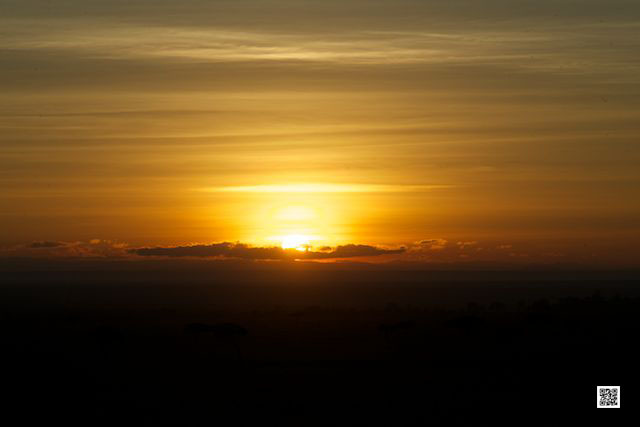
An image is endless. A photograph is a captured moment, yet a moment of infinity and so is the photo, infinite. No rewind, no replay button, its doing it all by itself.
With music one had to rewind and/or press replay to listen to the favorite song again, but not anymore. For those who cannot get enough of Gangnam Style or other persistently for replay asking hits Infinite Jukebox has arrived.
Read how it exactly works here and experience the infinity of a song, just like the infinity of a photograph.
Or are photographs a bit different infinite?
Ute Sonnenberg for www.rohoyachui.com
Popular Camera Settings 2012 & Their Meaning(lessness)
31/12/12 18:07 Filed in: Photography & Art

Reuters made a list of what they think the best photographs taken in 2012 with a whole range of information including camera settings.
Now the photography enthusiast and Reddit user hallbuzz made a list of all the camera settings of the 95 images from the Reuters list including camera brand, lens type, shutter speed and f-stop. Then another Reddit user mathiasa turned all this information into charts. See the charts on petapixel.
When looking at the charts one could be tempted to think that in order to be one day on the list of the 95 greatest photographs of the year, chosen by Reuters, one just can buy the equipment mostly used and the settings mostly applied. But is that so?
How often do you shoot a sports event like the Olympics? Are the best photographs shot with a Canon, rather than with a Nikon?
What are the charts tell? Photographers of press agencies get equipped by their employer and the employer chooses a camera brand of good quality he can get a good deal with. Same for the lenses, reflecting also in the f-stop stats. And from there it’s a bit of everything, depending on subject and location.
So, what does this example of stats of popular settings tell us? There is nothing like a popular setting one can just use, because others do. Camera settings always depend on the light and nothing else.
Happy snapping!
Ute Sonnenberg for www.rohoyachui.com
Travel Memories 2008: On Safari in Africa - Day 19
30/12/12 18:03 Filed in: Travel & Inspiration
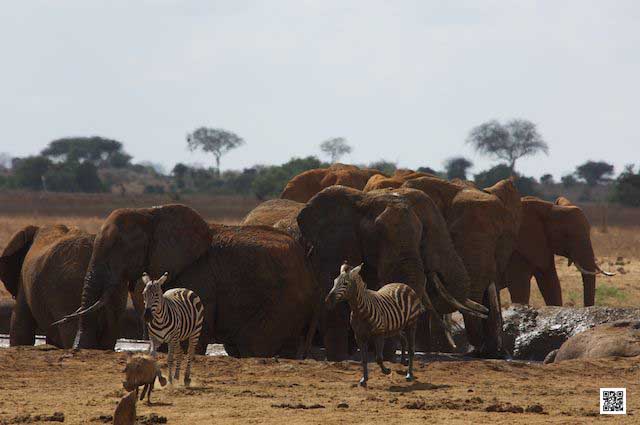
Unfortunately the bats had left behind quite a mess in the bathrooms and it was really a shame that nobody had thought about nets to keep them out. The facilities were really nice, except the other visitors. I found out later that every morning people are coming to clean the whole place and it’s fine until the bats come back. Nobody seemed to be bothered by it.
Tsavo East is well known for the elephants and we went out to find some. It was very dry and then the best thing to do is going to a waterhole. According to Paul there was a big dam where we could find plenty of animals. When we got there the dam was dry. Even Paul was surprised. He had never seen the dam dry. Not far away was another smaller waterhole and there the elephants were. It actually didn’t look much like a waterhole, more like a mud-hole, but the animals seamed happy with it. The elephants were standing in the mud, enjoying cooling down. Zebra, warthog, jackals and ostrich carefully tried to sip water from the mud. We stayed for hours.
In the afternoon we cruised through another part of the park and also there were plenty of elephants. Beautiful red colored elephants, from the red soil in the park.
Ute Sonnenberg for www.rohoyachui.com
Photo Safaris and Africa Travel Catalog
Safari Story: Leoaprd Teens and a Stressed Mom
29/12/12 18:02 Filed in: Safari Story

We had planned to stay the whole day out, with packed breakfast and the lodge would bring us lunch later. We were on a photo safari in the Sabi Sand in Kruger National Park in South Africa, the heaven for leopard photography lovers.
Staying the whole day out in the bush has the advantage that you can stay with the animal when you eventually found it and follow it the entire day. We had found a female leopard. She had two pretty “old” cubs of about 18 months old, two boys, still staying with her. Usually the cubs have to live on their own by this age, but the boys seemed to enjoy their mother’s care and were in no rush to live on their own and do all the hunting themselves. The mother is a good hunter and also this morning she had a kill hoisted in a tree. But there was no sign of the boys. After she had fed on the kill for a while she started calling for the boys. No response. She started walking away from the tree looking and calling for the boys. The calling is a gentle sound, heard by the cubs and telling them mom is calling and expecting response. But nothing. The mother kept going and calling and after about one hour doing so, she seemed to have enough. Now she was really calling, a loud, strong leopard call that made clear she will take no nonsense anymore. And suddenly one of the boys popped up, just a few bushes away from her approaching her in apologies and trying to sooth her anger. After a moment of accepting the cubs attempts to make it up again, they wandered off to the tree with the kill.
Ute Sonnenberg for www.rohoyachui.com
Photo Safari Essentials eGuide
Photography Rankings and What They Mean
27/12/12 12:29 Filed in: Photography & Art

“Ten percent of all of the photographs made in the entire history of photography were made last year — an astounding figure. More than ever before, thanks in part to cell phone technology, the world is engaged with photography and communicating through pictures. Nonetheless, a great photograph will rise above all the others.”
This quote comes from TIME Picks the Top 10 Photos of 2012.
But what is a great photo? Somehow the first image they choose with the man from Ghaza reminds me very much of the winning photo of Word Press Photo 2012. Are they playing safe by choosing what won an award elsewhere or do they really find it one of the greatest photos of 2012?
The problem is, that all rankings and awards are subject to the subjective judgment of the jury. They have an idea what they want an image to look like and the one that gets the closest to the idea is the winner. But what a jury likes is not necessary what you like and find a great image.
A great image is an image that appeals to you, an image you love and can’t stop looking at. A great image draws you into it and makes you discover new things all the time. It lets you experience the feeling it captured and takes you on a journey.
A great image, is an image you love.
Ute Sonnenberg for www.rohoyachui.com
The Power of Surprise in Photography
26/12/12 14:48 Filed in: Photography & Art

We don’t like unpleasant surprises, we like nice surprises; yet both ways, surprises have the power to make us more creative. When you plan to photograph your friend’s birthday party you will get from one surprise into the other, because the people will just not do what you as the photographer want them to do. You got to come up with creative solutions to get some nice pictures anyway. And at the end your own photographs will be the surprisingly good.
When you walk through your town, garden, in the woods or in the park, with every step you might be surprised by new photographic opportunities. And you will try to capture them the way they surprise you. Lets not mention walking in the bush and being surprised by an elephant, well then there is no time for photo safari snaps, then its time to run.
But isn’t it always the surprise of beauty that makes us snap? The moment of awe we capture and go back to when looking at the images. Surprise can reflect in the images in many ways, from the blurred photo, because we were surprised by that photographic opportunity coming along just now and we were not ready, to the building that surprised us with its beauty.
Look at your images and see how they surprise you, again and again, every time you look at them.
Keep being surprised and capture the awe!
Ute Sonnenberg for www.rohoyachui.com
On Photo Safari in the Serengeti: Lions on Warthogs
22/09/12 20:09 Filed in: Photo Safari | Photography & Art
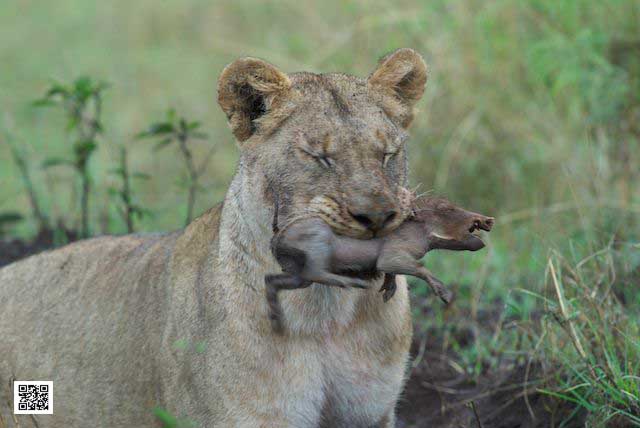
We were on a morning game drive on the Klein’s Concession in the Serengeti. It had rained and the moisture was still hanging in the air when we drove through the forest just behind our camp. Our Masai tracker Steve spotted lion, feeding on a kill. As we came closer we saw that it were all young lion, sub adults, probably on an expedition not far from the main group of the pride. They were feeding on a warthog and we could see that they had dug out the warthog from his burrow, lots of earth had been moved and there was a big whole.
After a while watching them, one lioness went into the warthog’s burrow and came out with a young warthog, still alive and screaming. She was looking like she didn’t really know what she was doing, following more an instinct then being hungry or wanting to hunt. The young warthog would die without its mother, either starving to death or being killed anytime later by other predators or scavengers. It was better to make it short and that might have been the silent assignment of nature for this lioness. She killed the young warthog and ate it and she went back to the burrow and came back with another one and another one. There had been three young warthog without mother and the young lioness did what she had to do, although she didn’t do it fast. Our Masai tracker Steve couldn’t watch it, because the youngsters were still alive for a few moments. He wanted her to do it fast and easy for the little ones, but maybe the lioness was just too inexperienced to understand that.
It was an impressive sighting, showing the innocence in the face of a young lioness while holding a struggling young warthog in her mouth, causing it pain and stress, before eventually doing what she is supposed to do. Nature is pulling the strings.
Tweet.
Ute Sonnenberg for www.rohoyachui.com
Photo Safari in the Serengeti: A Day with Lions
15/09/12 11:19 Filed in: Photo Safari | Travel & Inspiration

It was in the Serengeti when a pride of lion was lying in the grass, cubs playing and the females keeping an eye on the plains. This is just that incredible thing in the Serengeti that you can overlook the entire area and not only the lion can, also the photographer when looking out for photographic opportunities on a photo safari.
We spotted the lion on a morning game drive and while watching and photographing them a herd of zebra approached. That was promising. Maybe we could witness a hunt! We retreated a bit from the scene to not disturb the animals and waited. The zebra herd was lead by a stallion. He walked in front of them scanning the area, head up and alert. The lion pride had disappeared from earth as soon as they saw the zebras approaching. They were all down in the grass, no movement nothing at all to see of them. Nonetheless the leading zebra stopped about 60 meters away from the pride. The rest of the zebra herd just carried on grazing, but stayed behind the stallion, some of them even playing. The stallion and the herd stood there for at least 10 minutes and just at the moment that the stallion was about to carry on the big male lion of the pride popped up his head. He had been sleeping away from the females and cubs in the grass and had just woken up, wondering where his females are. When the stallion saw he male lion he stopped again, looked at him and them turned around and walked away where he came from. The herd followed him. There was no fast movement of any zebra, no panic, nothing and there was not attack of the lion. The females popped up their heads when the zebras had turned and walked away. Only one sub adult female an after the zebra, but only for a short distance. Nobody joint her. The lionesses are too wise to waste any energy. They knew they wouldn’t have a chance to catch a zebra, so they just carried on with what they were doing before the zebras arrived.
This was an incredible sighting and we decided to stay with them, but move away for now to have some breakfast at a nearby rock. While having breakfast we saw that a buffalo heard was approaching the lion pride and the buffalos had a completely different strategy than the zebras. They had seen the lion and they immediately started attacking them, because they wanted access to a nearby water whole (probably the zebras also wanted to get to the water whole, but they do not have the strength of buffalos). The buffalo’s lion chase made that the pride was scattered over the whole area, which makes the weak. After a few moments also the lion seemed to realize that and organized themselves again. The buffalos were at the water whole drinking. The lion let their cubs under a distant group of trees and each lioness and young male lion took position on a termite mount. They set up an ambush for the buffalos for when they would leave the water whole. Ambush in this case meant that the lion had positioned themselves to take advantage of a hunting chance, but they were completely visible on the termite mounts. They were waiting. After quite a while the buffalos started moving off, but unfortunately for the lion in the wrong direction away from their positions. The lion left their termite mounts and met with the cubs under the trees. All were lying down in the grass again, again not wasting any energy.
Later on in the afternoon, still at the same spot and still lying in the shade and the cubs playing, a heard of elephants approached. And also the elephants made clear that they don’t want the lion around and chased them away. The lion moved off and lied down in the grass away from the elephants. They knew there was no hunting opportunity and again they saved their energy for better opportunities probably occurring during the night.
Being able to follow the lions throughout the day, well actually being with them the whole day in the same spot, was a great photographic opportunity and also a great learning experience from the photographic point of view and animal behavior point of view. They are so much wiser than we are … well probably except that male lion.
Ute Sonnenberg for www.rohoyachui.com
How to make an Infographic
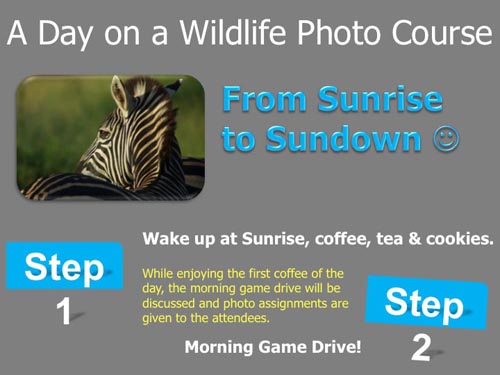
In case you are wondering how people make these awesome infographics you can see on Pinterest and other social media, here are a template, an example and a guide how to do them.

The template is from Hubspot and available here. And a step by step Snapguide can help you to get it easily done.
Enjoy making your own awesome infographics and get your message out.
Ute Sonnenberg for www.rohoyachui.com
Annie Leibovitz: A Dance with Light
04/09/12 15:42 Filed in: Photography & Art
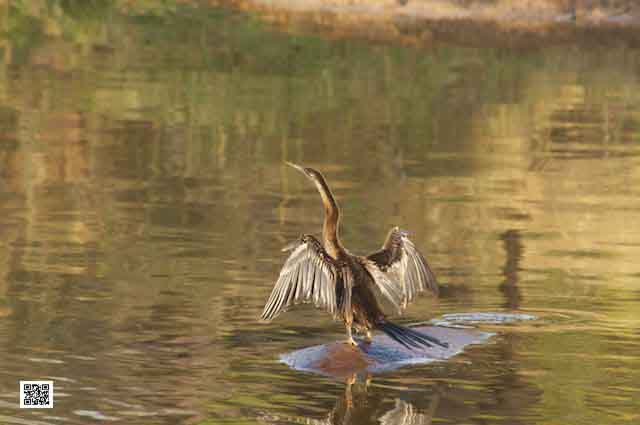
Nature is so powerful, so strong. Capturing its essence is not easy - your work becomes a dance with light and the weather. It takes you to a place within yourself. Annie Leibovitz
Maybe the strongest and most powerful nature is the African bush. Photographing its essence is an intense experience, unleashing energy, imagination, inspiration and creativity. Being on a Photographic Safari is an incredible photographic discovery. It brings us back to our origins and induces strengths we didn’t know we have. And from these places within ourselves it brings us back into daily life radiant and strong. And when a bad day at the office drained this energy, we just look at the images and restore.
And we dance again with light.
Ute Sonnenberg for www.rohoyachui.com
How to Utilize Photogrpahy in Team Building

Many companies organize team buildings to create opportunities for their teams of employees to bond in an informal environment away from their usual workspace. To enhance the informal character mostly some kind of activity is chosen that allows interaction like carting, rafting, other sport activities or special experiences like a balloon ride. People usually love it. It gives the opportunity to interact in a different way with your colleagues and to get to understand each other better.
How would it be to add photography to team buildings and what would be the benefits? Nowadays with the smart phones and tablets, photos are taken all the time and also during team buildings, but mostly like on a holiday as memories. But photography can offer more and add extra benefits to the team building.
Photography can become the bonding tool of the team building and the anchor of the achieved result at the end. By making photography part of the activity through assignments involving the sport, the experience or even wildlife it adds extra stimulation, motivation, fun and understanding of each other. And at the end it can be utilized to anchor the groups experience through images that reflect the purpose of the team building.
Photography can be a vital source of fun, insight, stimulation and motivation for something important as a team building. With the side effect that its results last forever. … and its easy too!
Tell your boss!
Ute Sonnenberg for www.rohoyachui.com
The Only Limitation for Your Photography is You
29/08/12 17:19 Filed in: Photo Tips | Photography & Art

What do you think about your own photography? When you show your images to others, do you immediately start commenting them why you did this and this and excusing something you think could have done better?
Our photography shows always something of us and it is for ourselves like looking into a mirror when looking at our images. And if we do not like certain sides of ourselves, we might start limiting ourselves in our freedom of photographing what ever comes up or we wish to retouch our photographs in order to cover the flaws we think we have. But like with thinking our nose is skew and everybody will notice, we might be the only one seeing a flaw in the photograph. And what is actually a flaw? Nobody notices a skew nose in a fascinating personality and a blur photo can be the most fascinating image, magnetizing a room.
When you love a photo, it is a great photo and your heart is always right. Listen to it and you will enjoy the freedom photography has to offer.
Ute Sonnenberg for www.rohoyachui.com
Would you like to do a Webinar?
22/08/12 17:15 Filed in: Photo Tips | Photography & Art

Photography is an inspiring medium and we all seem to love it and do it almost every day. There seems always to be some kind of discussion going on around photography, questions asked and opinions shared. How would it be to do that during a webinar?
If there is interest in doing a photography webinar, just leave a message to this blog post.
And if yes, what would you like the webinar to be about? What kind of photography subject would you like to hear and talk about?
You are welcome to share your thoughts and to inspire. Thank you!
Ute Sonnenberg for www.rohoyachui.com
How to Photograph Leopards
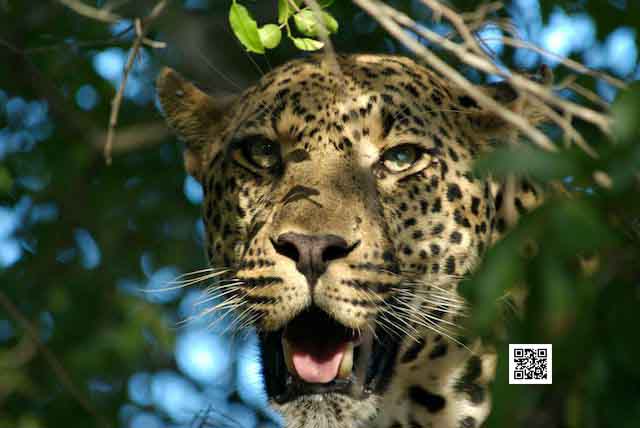
It might sound far-fetched, but Quantum Physics is the starting point to understand and photograph leopards. Everything is made of the same energy and everything is connected to everything else is an essential lesson from Quantum Physics, that applies to us as it applies to leopards, a coffee mug and the car we are driving in. Because we are all made of the same energy, we are also all connected and communicate on the energy level all the time, mostly without being conscious about that, although we use phrases like “we are on the same wavelength” with somebody or not. So somehow we know that we are communicating on frequencies like radio channels and some people can receive the signals and some don’t or receive only distorted messages. That means that the energy we are made of vibrates or moves in different frequencies, higher or lower frequencies, faster or slower. We might experience situations where we immediately have a good “click” with somebody. Most likely this persons communicates on energy level on the same frequency as we do. When we experience a situation that we find it difficult to be in the presence of a certain person for too long, because we start to feel tensed and restless, like pressure is building up, we might have an encounter with somebody of a high frequency energy and our energy frequency finds it hard to adjust to the same level. In the other direction to a lower frequency the adjustment is easier and mostly not experienced as demanding or unpleasant. But what does all that have to do with photography and especially leopard photography?
An easy answer could be, wait until you look one into the eyes, but it is helpful to know what happens when you are in the lucky position to be near a leopard and able to spend time with the animal. The difference in photographing wildlife in general and leopards in particular is the very high frequency energy this incredible cat has. Being conscious about that helps a lot when photographing them.
Imagine you are on a game drive and suddenly there is the leopard you were looking for already for days, right in front of the vehicle on a termite mount. Now just shoot away. Don’t think. Let the adrenaline from the excitement out and also take the pictures you can get, before the leopard possibly disappears. This moment might take a minute or two. You will feel when the excitement has settled and you will sit more relaxed in the vehicle. First thoughts of how to photograph the leopard properly will pop up. The next thing might be a feeling of impatience and negative thoughts about the light, the not doing anything animal, chaos with the camera settings, maybe a bit cursing, annoyance and eventually anger why we are still here with this leopard, enough leopard. This is a very important moment. When you decide to leave the sighting, you will miss the chance to connect with the animal and to get the most beautiful photos. All the negative thoughts and the physical reactions of feeling uncomfortable are caused by the difference in energy vibration/frequency. The leopard as a high frequency animal is just sitting there and doing nothing, only sending out on his/her frequency and your energy is trying to tune in to the leopards energy frequency. This tuning process causes the uncomfortable feeling. It will disappear as soon as you are tuned in and from there its as easy as what to photograph this amazing animal and to get the most beautiful leopard images.
Be patient. Stay with the animal and give yourself the time to tune in. As soon as you are tuned in on the leopards frequency the whole “energy situation” on the sighting will calm down and all present parties will connect on the same level. The leopard will start doing his/her thing and the most incredible photo opportunities will occur.
Try it at home with your cat and get trained for the big cat!
Ute Sonnenberg for www.rohoyachui.com
How to Organize Your Loads of Photo Safari Images

Digital Photography is a great thing. It makes us shoot away, not thinking and worrying too much, just snapping and enjoying this incredible hobby or profession. But there is a little downside. How to handle all these images?
Many of us are struggling with this part of photography and when you’ve got down the road for a while with now good idea how to do organize your images, it becomes more and more frightening to start doing it properly and organizing the archive.
Here some tips that might help getting some structure into the huge amount of images we are taking and taking away the fear of doing it.
Reflect & Anticipate.
Before you even start taking images think of how you want to find them back and/or think of how you usually find things back. Everybody has got his/her own way of thinking and remembering, the way we go through the drawers of our brain for all sorts of things. Some have a photographic memory others are good with numbers. There are plenty of different ways of thinking. Reflect and identify your way of thinking and remembering. You might like to store the images chronologically by making folders like “day 1 of photo safari”, “day 2 of photo safari” or you rather like to make folders per subject like “lion”, “leopard”, “cheetah” and “landscape”. Only you know what suits you best and fits your thinking patterns. Reflect on that and make an important first step to organize your images.
Then anticipate. When you are for example very lucky and on a game drive where you see five different leopards, you want to be able to know afterwards which images where of which leopard. Take an image of the sky or another landmark that does not fit into the sequence of the leopard shots before you start photographing the next leopard. It will tell you later that this was the other leopard, leopard number two and you can put him in his dedicated folder. It works also very well when photographing for example dog shows or horse sports events. It will save you lots of time and nerves when going later through your images to find the one your friend is asking for.
Structure the image upload to your computer.
When the moment comes to upload your images to your computer you know already how you want the images to be organized, because you did the reflection and the anticipation beforehand. Now comes again a bit anticipation. Before you start uploading your photos, make the image folders on the computer first. That will prevent the leopard images going automatically into the big folder of all holiday photos, but directly to where you want them. When you have a folder “photo safari”, make a subfolder “leopards day 1” or only a subfolder “day 1”, whatever suits you best to have the structure to find them back later set.
Upload and backup.
Your images are on your computer, nicely organized and you can find everything easily when you need it. Now comes the next and final step, the backup. The general rule is that you should have 2 backups and one backup off site. The backups are usually done on an external hard drive, to prevent image loss due to computer problems or theft. Create the same folder structure you use on your computer on the backup hard disks, because your thinking stays the same and you want to find things back. The off site backup can also be a hard drive with your images that you store in a safety deposit box at your local bank. An alternative is to store your images off site is the cloud, but when you shoot big files that will only apply to your very best images. Otherwise it will take forever to load them to the cloud and take a lot of space.
Now you are all set and organized. No worries anymore and free brain space to think about nice photography opportunities instead of how to organize and find your photos again.
Easy software for organizing images is Aperture. I don’t know how it works with Lightroom, but its also used by many people.
Enjoy a photo database without worries and keep snapping away!
Ute Sonnenberg for www.rohoyachui.com
5 Tips for Choosing the Right Photo Course
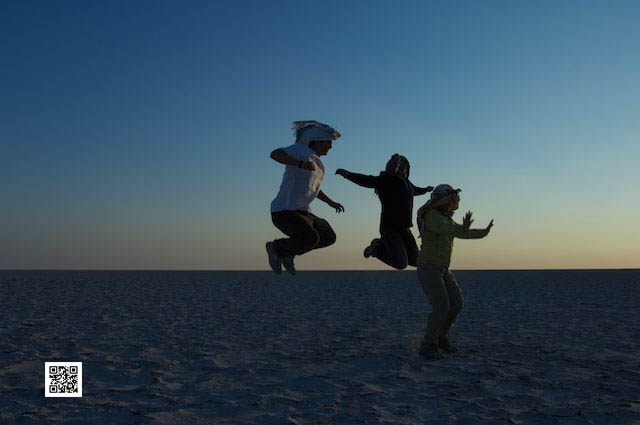
Fortunately we live in times of blooming creativity and plenty of opportunities to learn creative crafts like painting, sculpturing, cooking, photographing, gardening, app creating and many more. But it’s sometimes hard to find the right course and setting to learn and to get the most out of it. Here some pointers to help identifying a good course. They apply not only to photography, but also to courses in general.
- Make sure the course is about the students and not about the teacher. That means it stimulates the creativity of the students and enables them to develop their own style, guided by the teacher.
- Make sure the group is not to big or even go for individual training if it suits your purpose. Small groups provide more attention and space for individual questions and needs.
- Make sure you feel safe in the group. It’s a creative course and you will show yourself through your work. You will flourish and grow, if you feel safe to show your work and ask questions.
- Make sure you like the course environment incl. location, people, services and other facilities. That will stimulate your creative work and growth.
- Make sure it is fun. Fun makes us learn easier and learning enjoyable.
You might think, but I will know all these things only when I’m already in the course. Think back when you did courses in the past. Didn’t you have the right feeling about it already from the moment you booked it? Trust your intuition and you will have a great photo course, cooking classes, painting sessions or any other creating adventure you want to embark on.
Enjoy creating!
Ute Sonnenberg, www.rohoaychui.com
